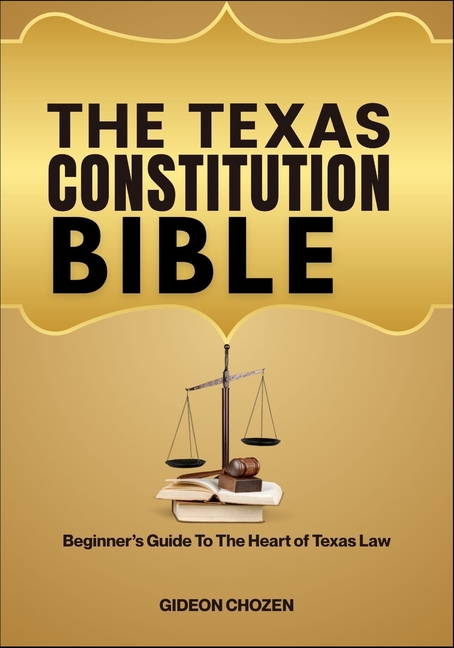Description
The Constitution of Texas stands as the fundamental legal document that defines the structure, powers, and functions of the government of the State of Texas. It is the supreme law within the state's jurisdiction, guiding the operation of all governmental branches-legislative, executive, and judicial-and safeguarding the rights and liberties of its citizens. As a foundational charter, it not only establishes the framework for governance but also reflects the unique historical, political, and social experiences that have shaped Texas over centuries.
Texas boasts a rich and complex constitutional history, having undergone multiple constitutions since its earliest days as a territory and republic. The current Constitution of Texas, adopted in 1876, is the state's seventh and is known for its length, detail, and emphasis on limiting government power. It was crafted in the aftermath of the Civil War and Reconstruction, during a period when Texans sought to curtail the expansion of state government and ensure a strong protection of individual rights and local control.
The 1876 Constitution is distinguished by its highly decentralized approach to governance. Unlike the federal Constitution of the United States, which is relatively brief and broad, the Texas Constitution is lengthy and highly specific, containing numerous provisions that dictate not only the broad structure of government but also intricate details of policy, administration, and public finance. This level of detail reflects Texans' deep-seated desire to restrain government authority and preserve a wide range of local liberties.
One of the most important aspects of the Texas Constitution is its embodiment of popular sovereignty-the principle that political power ultimately rests with the people. The document creates a government accountable to its citizens by establishing regular elections, delineating clear separations of power, and granting protections for individual freedoms such as free speech, religious liberty, and due process under the law.
However, the Texas Constitution has been criticized for its complexity and rigidity. Its extensive amendments-over 600 since its adoption-highlight challenges in governance and changing political priorities. Many provisions that might be handled through legislation at the state level are embedded in the Constitution itself, which can complicate government operations and make reforms difficult. Nonetheless, it remains a vital symbol of Texas's independent spirit and commitment to limiting centralized authority.
In this introduction, we will explore the historical context that gave rise to the Texas Constitution of 1876, examine its major structural components, and analyze its enduring significance in shaping Texas government and society. Through this exploration, the Constitution emerges not merely as a legal document but as a living testament to the values, struggles, and aspirations of Texans throughout history.
Texas boasts a rich and complex constitutional history, having undergone multiple constitutions since its earliest days as a territory and republic. The current Constitution of Texas, adopted in 1876, is the state's seventh and is known for its length, detail, and emphasis on limiting government power. It was crafted in the aftermath of the Civil War and Reconstruction, during a period when Texans sought to curtail the expansion of state government and ensure a strong protection of individual rights and local control.
The 1876 Constitution is distinguished by its highly decentralized approach to governance. Unlike the federal Constitution of the United States, which is relatively brief and broad, the Texas Constitution is lengthy and highly specific, containing numerous provisions that dictate not only the broad structure of government but also intricate details of policy, administration, and public finance. This level of detail reflects Texans' deep-seated desire to restrain government authority and preserve a wide range of local liberties.
One of the most important aspects of the Texas Constitution is its embodiment of popular sovereignty-the principle that political power ultimately rests with the people. The document creates a government accountable to its citizens by establishing regular elections, delineating clear separations of power, and granting protections for individual freedoms such as free speech, religious liberty, and due process under the law.
However, the Texas Constitution has been criticized for its complexity and rigidity. Its extensive amendments-over 600 since its adoption-highlight challenges in governance and changing political priorities. Many provisions that might be handled through legislation at the state level are embedded in the Constitution itself, which can complicate government operations and make reforms difficult. Nonetheless, it remains a vital symbol of Texas's independent spirit and commitment to limiting centralized authority.
In this introduction, we will explore the historical context that gave rise to the Texas Constitution of 1876, examine its major structural components, and analyze its enduring significance in shaping Texas government and society. Through this exploration, the Constitution emerges not merely as a legal document but as a living testament to the values, struggles, and aspirations of Texans throughout history.
Last updated on
Product Details
- Jun 23, 2025 Pub Date:
- 9798289362773 ISBN-10:
- 9798289362773 ISBN-13:
- English Language




